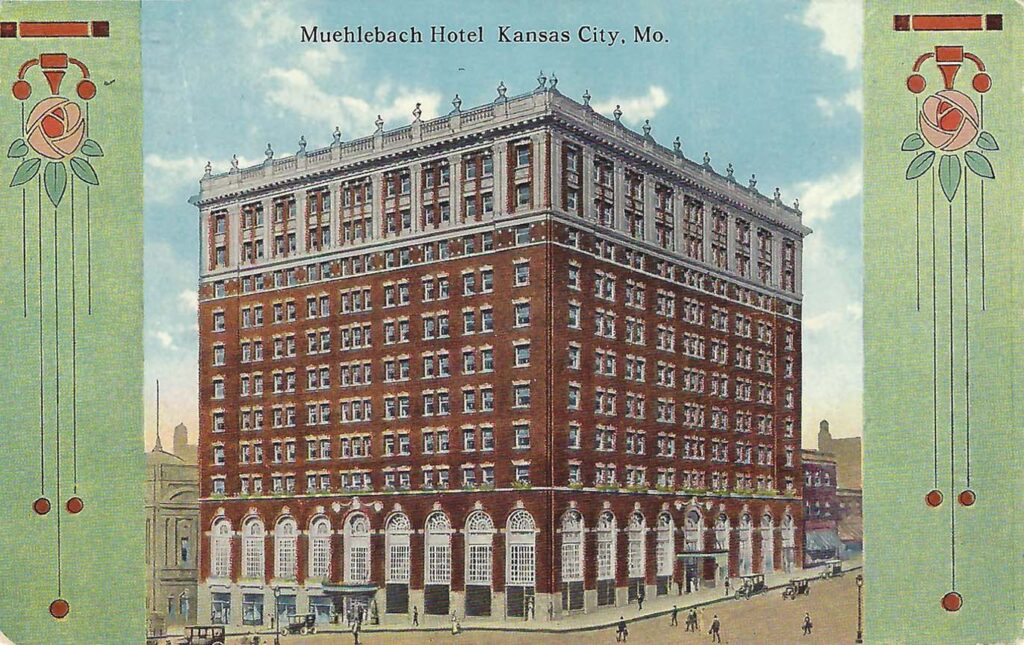
Michael Bushnell
Publisher
This summer The Northeast News will be spotlighting local beer history through our weekly historic postcard column. Kansas City has a rich brewing history through families like the Heims, Goetz, Muehlebachs and the Lemp brothers. So sit back, grab a tall glass of cold suds, and enjoy our summer postcard series on all things beer in Kansas City.
In August of 1870, George Hierb sold his brewery to brothers George and John Muehlebach. The 18th and Main Street location had an excellent source of spring water that never exceeded 43 degrees Fahrenheit. At that time the brewery was hardly larger than a wooden shack, but the brothers expanded the operation and by the end of 1879, they were producing over 3,900 barrels a year, making it second only to Henry Kump’s brewery.
In 1880, following the death of John Meuhlebach, George Sr. razed the old shack, erecting a new building on the site. Known by locals as “Beer Castle,” the brewery was the most up-to-date in town, in terms of equipment, and producing a pilsener that was fast becoming a local favorite.
George Edward Muehlebach assumed leadership of the Muehlebach Brewing Company in 1905 at the young age of 23. He was educated at Saints Peter and Paul Catholic School and was a graduate of Spalding’s Commercial College at the age of 17.
Throughout his youth, George had worked summer jobs in his father’s brewery and he was familiar with most every operation in the plant. Between 1905 and 1913, the brewery’s sales and size doubled under George Muehlebach’s leadership.
The Muehlebach Estate Company had large real estate holdings in the burgeoning downtown area of Kansas City and in 1916, a new hotel was built at 12th and Baltimore that bore the family name. The hotel quickly became one of the most popular spots in town with its fashionable Tea Room and Terrace Grill restaurants.
George E. also had a keen interest in baseball, playing first base on the company team “The Pilseners” during his teenage years. He owned the American Association Kansas City Blues, and in 1923, built Muehlebach Stadium at 22nd and Brooklyn Avenues on the city’s East Side. It was the only stadium in the league that did not sport any advertising billboards.
With the passage of the Volstead Act in 1919, the family brewery pivoted operations to produce Mulo, fruit flavored, near-beer beverages in order to remain solvent. For 13 years the company churned out case after case of green bottled near-beer that, by volume, contained only half of 1% alcohol.
By 1932, the national political sentiment on prohibition was rapidly shifting and George Muehlebach began securing funding to reopen his brewing operation. Much of his old equipment had been sold for scrap, however, so he formed a strategic partnership with the San Miguel Brewing Company in Manilla, The Philippines, and Robert A. Drum, CEO of the Fontenelle Brewery in Omaha. In the Spring of 1937, some three years after the repeal of prohibition, the Muehelbach brothers had secured financing and began building on a new brewery site at 4th and Oak Streets in the old Market area of the city.
Sales were strong and the brand expanded with its trademark green bottles to distribution in roughly eight states, in addition to its distribution in Kansas and Missouri. A special beer recipe was even developed for sale exclusively at the Hotel Muehlebach.
In 1955, the Athletics came to Kansas City from Philadelphia and rather than selecting Muehlebach as their beer of choice at Municipal Stadium, Schlitz was chosen over the hometown brew. As if on cue, in January of 1955, George E. Muehlebach passed away. On June 28, 1956, Muehlebach Brewery was sold to Schlitz, thus ending almost 90 years of family beer history in Kansas City.
Today the Muehlebach Hotel, operating as part of the downtown Marriott, is the only remnant of the rich brewing history left by the Muehlebach family.
Special thanks to the Kansas City Public Library’s Missouri Valley Room, and “Hometown Beer: 1999, A history of Kansas City’s Breweries” by H. James Maxwell and Bob Sullivan Jr.

















